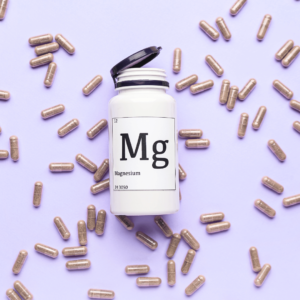Perimenopause and menopause are not the same thing
We so desperately would like to hope that the days where we see the decline of fertility occurring for women, wasn’t just labeled as menopause.
Unfortunately, shows like AJLT on HBO Max further ruin women’s body literacy with god awful script writing, that leaves Charlotte saying she hasn’t had her period in 4 months so she’s “done done” as in “I’m in menopause”.
Perimenopause has become this forgotten transition, where any signs and symptoms in perimenopause are just labeled as “she’s going through menopause”.
But perimenopause and menopause, could not be more different. Comparing perimenopause and menopause is like comparing day and night, cats and dogs, apples and oranges, men and women (you’re getting the point); and labelling them as the same thing, is quite frankly not good enough.
Perimenopause is when we start to see all the unpleasant signs and symptoms – hot flushes, mood swings, insomnia, fluid retention, body fat distribution changes; this can sometimes start 10 YEARS before menopause actually clocks over. Perimenopause is not a time of low estrogen, but a time of wildly erratic and unopposed estrogen levels.
Because we are not ovulating with as good quality eggs, seeing dwindling ovarian reserves, a disruption of our positive/negative feedback loops in our cycle, and a lack of sensitivity of inhibin, high FSH levels, cortisol hijacking our pregnenolone production, and at times anovulatory cycles; perimenopause is an absolutely wild ride for many women.
Many practitioners and researchers are now finding that perimenopause has been approached totally incorrectly for the better part of 50 years – with much thanks to the incredible work of Dr. Jerrilynn Prior. Dr. Prior has been paving the way for many women, and is one of the reasons we have had a shift in the approaches to perimenopause and moving away from exogenous estrogen as HRT. There is a lot of research indicating that progesterone therapy is more beneficial for women during menopause, because this is a period of a significant lack of progesterone and wildly erratic and unopposed estrogen.
Menopause is signified as the 12 months after cessation of menstrual cycles. You don’t know you’re in menopause, until you’re in menopause. You might get to 10 months, and think “I’m close to being in menopause”, and then have a bleed and be back at day 1 of your 365 day count.
Because of cessation of ovulation and menstrual cycles, menopause is where we have a total flatline of our sex hormones with incredibly low estrogen and progesterone levels. Menopause is a time where we can see things like osteoporosis take place in women, because of a decrease in estrogen and bone mineral density; where in the first 5 years of menopause, we see roughly a 10% decrease in bone mineral density from this loss of estrogen.
We do commonly see a hereditary link here, where our mothers, sisters, aunts, and grandmothers will follow a similar trend of when they finally transitioned into this life stage. So as a saving grace, if you know that every woman in your maternal family has transitioned into menopause around 55 years of age; you can expect a similar experience.
As you can see, these are two COMPLETELY different life stages for women and why we cannot lump management of these life stages into one.





